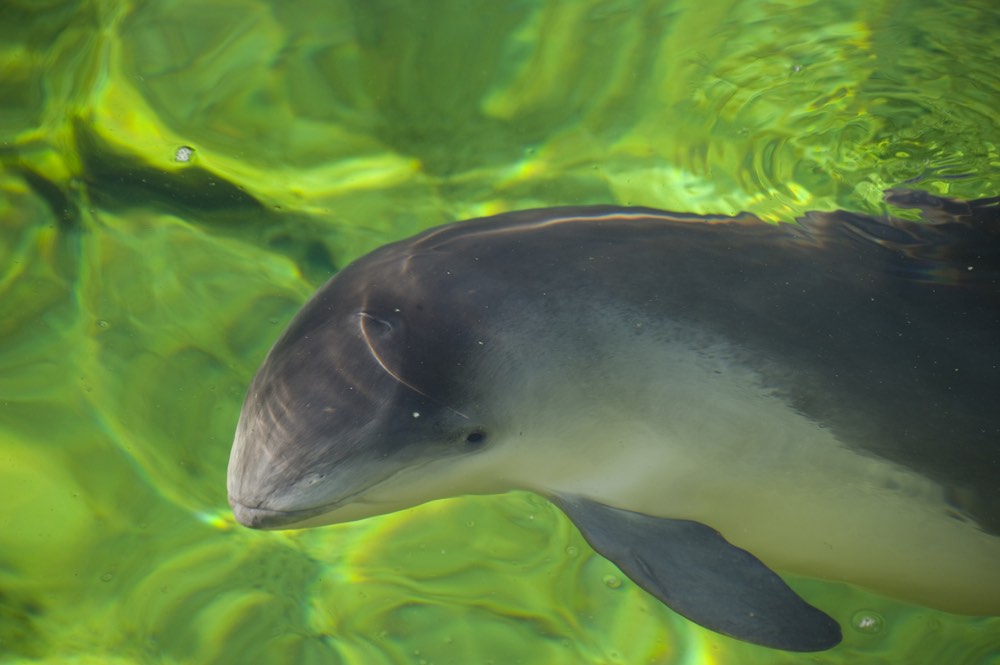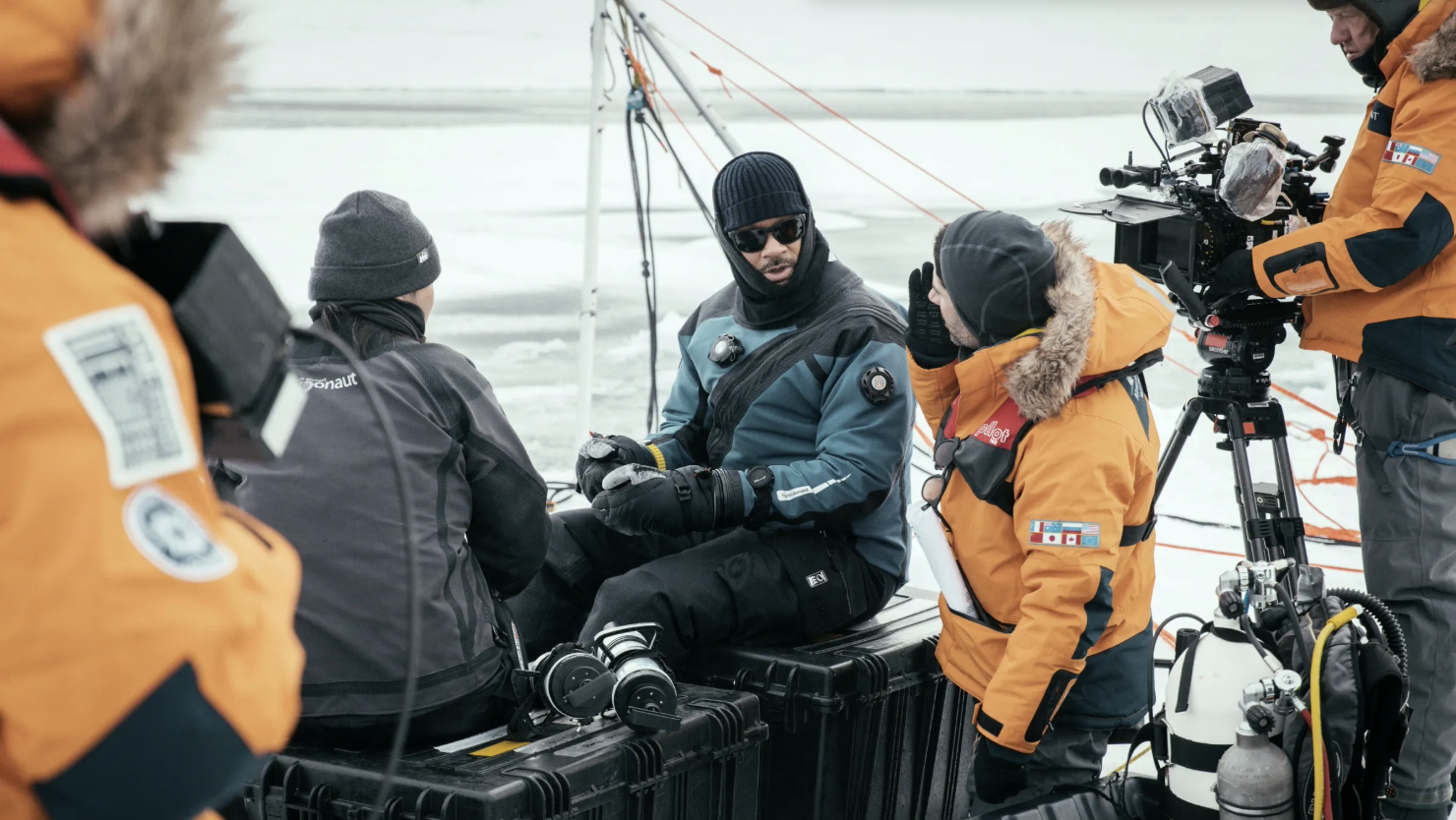Facts About Porpoises

Porpoises are members of the scientific order Cetacea and are related to dolphins, but the two animals are different species. They both have sleek bodies and large flippers. Both are considered brainy creatures and they both have a melon, a structure in the forehead that they use to produce sound waves for navigating their watery homes.
However, porpoises and dolphins differ in several ways. For example, porpoises don't have elongated beaks like dolphins. Also, porpoises have triangular dorsal fins, while dolphins have curved or hook-shaped fins. The exception are finless porpoises. They don't have fins at all. Dolphins' teeth are cone-shaped, while porpoises' teeth are spade-shaped, according to National Oceanic and Atmospheric Administration.
Size
Porpoises are also shorter than dolphins. They grow to 5 to 6.6 feet (1.5 to 2 meters) and weigh 110 to 265 lbs. (50 to 120 kilograms). In contrast, the bottlenose dolphin grows to around 8 feet (2.5 m) long and weighs between 440 to 660 lbs. (200 to 300 kg).
Habitat
There are six species in three genera of porpoise. As their name implies, Gulf of California harbor porpoises are found around the northern part of the Gulf of California. Black porpoises, also known as Burmeister's porpoise, live off the coasts of eastern and western South America, according to the International Union for Conservation of Nature (IUCN).
The spectacled porpoise likes cold water and has been found all around the world in a zone just north of Antarctica. The common porpoise, or harbor porpoise, also likes cold water, but sticks to the east coast of North America, around southern Greenland, waters off the northern coasts of Scandinavia and off the coasts of Alaska and Japan.
Dall's porpoise sticks to the northern rim of the Pacific Ocean. Some finless porpoises can be found in the Yellow Sea between China and Korea, and around southern Japan, while others swim along the coasts of South Asia.
Some porpoises don't just stay in the ocean. Some swim in rivers and channels, as well, and can handle both salt and fresh waters. For example, the finless porpoises live in coastal waters and rivers along the Indian Ocean and western Pacific Ocean.
Get the world’s most fascinating discoveries delivered straight to your inbox.
Habits
Most porpoises are social animals. They live in groups called shoals that can have just a couple members to thousands, according to the Animal Diversity Web (ADW). Dall's porpoise, for example, lives in shoals with two to 20 members, while a harbor porpoise's shoal may have six to 100 members.
Diet
Porpoise diets vary, depending on species, but they mostly stick to fish, crustaceans, octopus and squid. They can also be big eaters. The harbor porpoise eats about 10 percent of its body weight each day, according to the National Wildlife Federation.
Offspring
There isn't a lot known about porpoises in general, and there seems to be a particular lack of knowledge when it comes to the animal's reproductive habits. Since porpoises are mammals, they have live births. The females have a gestation period of 10 to 11 months and give birth to one young at a time. The young are called pups or calves.
Pups are weaned at seven to 24 months of age and are sexually mature around 2 to 8 years of age, depending on the species. Porpoises can live up to 23 years.
Classification/taxonomy
Here is the taxonomy of porpoises, according to the Integrated Taxonomic Information System (ITIS):
Kingdom: Animalia Subkingdom: Bilateria Infrakingdom: Deuterostomia Phylum: Chordata Subphylum: Vertebrata Infraphylum: Gnathostomata Superclass: Tetrapoda Class: Mammalia Subclass: Theria Infraclass: Eutheria Order: Cetacea Suborder: Odontoceti Family: Phocoenidae Genera and species:
- Neophocaena phocaenoides (finless porpoise)
- Phocoena dioptrica (spectacled porpoise)
- Phocoena phocena (common porpoise, harbor porpoise)
- Phocoena sinus (Gulf of California harbor porpoise, Vaquita porpoise)
- Phocoena spinipinnis (black porpoise, Burmeister's porpoise)
- Phocoenoides dalli (Dall's porpoise, True's porpoise)
Conservation status
The only porpoise that is listed as endangered by the IUCN's Red List of Threatened Species is the Vaquita porpoise. The Vaquita porpoise is listed as critically endangered because the population is believed to be decreasing, though specific population counts are currently unknown.
The finless porpoise and the Indo-Pacific finless porpoise are listed as vulnerable. This is because their populations seem to be on the decline. Other species are listed as least concern or have no classification because there hasn't been enough data collected on the species.
Other facts
The harbor porpoises' name is true to its habitat. They like to stay in water that is no deeper than 500 feet (152 m) along the coastline.
Finless porpoises appear to be black, but they are actually grey with bits of blue.
Additional resources

 Live Science Plus
Live Science Plus






